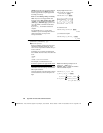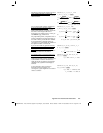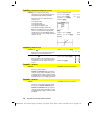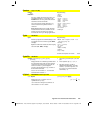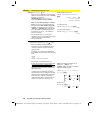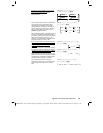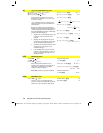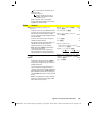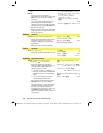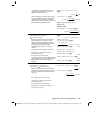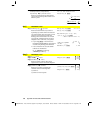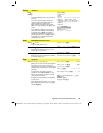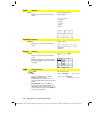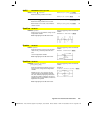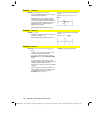
434 Appendix A: Functions and Instructions
8992APPA.DOC TI-89 / TI-92 Plus: Appendix A (US English) Susan Gullord Revised: 02/23/01 1:48 PM Printed: 02/23/01 2:21 PM Page 434 of 132
Define progName(arg1Name, arg2Name, ...) = Prgm
block
EndPrgm
Creates
progName
as a program or
subprogram, but cannot return a result using
Return
. Can execute a block of multiple
statements.
block
can be either a single statement or a
series of statements separated with the “:”
character.
block
also can include expressions
and instructions (such as
If
,
Then
,
Else
, and
For
) without restrictions.
Note: It is usually easier to author and edit a
program block in the Program Editor rather
than on the entry line.
Define listinpt()=prgm:Local
n,i,str1,num:InputStr "Enter
name of list",str1:Input "No.
of elements",n:For
i,1,n,1:Input "element
"&string(i),num:
num
!
#str1[i]:EndFor:EndPrgm
¸
Done
listinpt()
¸
Enter name of lis
t
DelFold
CATALOG
DelFold folderName1
[
, folderName2
] [
, folderName3
]
...
Deletes user-defined folders with the names
folderName1
,
folderName2,
etc. An error
message is displayed if the folders contain
any variables.
Note: You cannot delete the
main
folder.
NewFold games
¸
Done
(creates the folder
games
)
DelFold games
¸
Done
(deletes the folder
games
)
DelVar
CATALOG
DelVar var1
[
, var2
] [
, var3
]
...
Deletes the specified variables from memory.
2
!
a
¸
2
(
a+2
)
^2
¸
1
6
De
l
Var a
¸
Done
(
a+2
)
^2
¸
(
a
+
2
)
ñ
deSolve()
MATH/Calculus menu
deSolve(1stOr2ndOrderOde, independentVar,
dependentVar)
⇒
a general solution
Returns an equation that explicitly or
implicitly specifies a general solution to the
1st- or 2nd-order ordinary differential
equation (ODE). In the ODE:
•
Use a prime symbol ( '
, press
2
È
) to
denote the 1st derivative of the dependent
variable with respect to the independent
variable.
•
Use two prime symbols to denote the
corresponding second derivative.
The ' symbol is used for derivatives within
deSolve()
only. In other cases, use
d
()
.
The general solution of a 1st-order equation
contains an arbitrary constant of the form
@
k
, where
k
is an integer suffix from 1
through 255. The suffix resets to 1 when you
use
ClrHome
or
ƒ
8: Clear Home
. The
solution of a 2nd-order equation contains two
such constants.
Note: To type a prime symbol (
'
), press
2
È
.
deSolve(y''+2y'+y=x^2,x,y)
¸
y=(@1
ø
x+@2)
ø
e
ë
x
+x
ñì
4
ø
x+6
right(ans(1))
!
temp
¸
(@1
ø
x+@2)
ø
e
ë
x
+x
ñì
4
ø
x+6
d
(temp,x,2)+2
ù
d
(temp,x)+temp
ì
x^2
¸
0
DelVar temp
¸
Done



